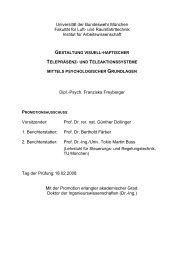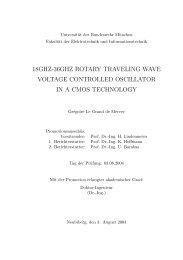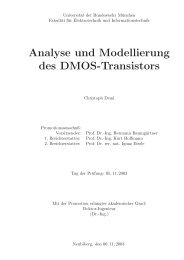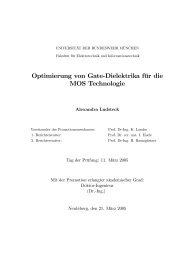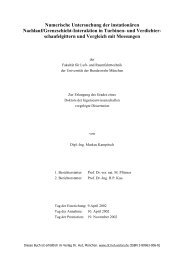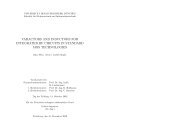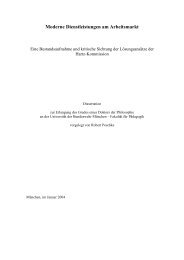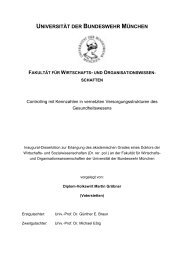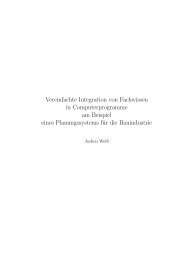Precise Orbit Determination of Global Navigation Satellite System of ...
Precise Orbit Determination of Global Navigation Satellite System of ...
Precise Orbit Determination of Global Navigation Satellite System of ...
Create successful ePaper yourself
Turn your PDF publications into a flip-book with our unique Google optimized e-Paper software.
Chapter 8 Geostationary <strong>Orbit</strong> <strong>Determination</strong> And Prediction During <strong>Satellite</strong> Maneuvers<br />
where p = a 1−e<br />
2<br />
Clearly, from the results Eq.(8-22) and Eq.(8-23), the short periodic variations <strong>of</strong> the orbital parameters under<br />
the influence <strong>of</strong> the non-spherical earth gravitation are removed, the remaining is secular and long periodic<br />
variation terms, i.e.<br />
� 3 J2<br />
35 J4<br />
�6<br />
3 2 � 3 2 1 3 �<br />
∆Ωs =−� 2 cosi − 4 � cosi+ sin icos i�( 1 + e + e ) �<br />
(8-24)<br />
�2<br />
p 8 p �7<br />
2 � 2 3 �<br />
� J3<br />
� 15 2 3 � 35 J4<br />
�3<br />
2 3 1 2 3 2 3 ��<br />
∆is = cos i�−<br />
3 �(<br />
sin i− ) ecosω�+<br />
4 � e sin i( − sin i)sin 2ω<br />
+ e sin isin<br />
4ω<br />
��<br />
(8-25)<br />
� p � 8 2 � 8 p �2<br />
7 2<br />
8<br />
��<br />
General forms <strong>of</strong> Eq. (8-24) and Eq.(8-25) can be written as,<br />
∆Ω s<br />
�3<br />
J 35 J �6<br />
3 �<br />
�<br />
=−� i − � i+ i i�1+ e + e �n t−T �2<br />
p 8 p �7<br />
2 � �<br />
3<br />
2<br />
4<br />
2 2 1 3<br />
2 cos 4 cos sin cos ( ) ( 0)<br />
(8-26)<br />
2 3<br />
� J3<br />
� 15 2 3 � 35 J4<br />
�3<br />
2 3 1 2 3 2 3 ��<br />
∆is = cos i�−<br />
3 �(<br />
sin i− ) ecosω�+<br />
4 � e sin i( − sin i) sin 2ω<br />
+ e sin isin 4ω��n(<br />
t−T0) � p � 8 2 � 8 p �2<br />
7 2<br />
8<br />
��<br />
(8-27)<br />
Since J2=-0.1083×10 -2 , J3=0.2532×10 -5 , J4=0.1620×10 -5 , J3 and J4 are much smaller than J2, and for<br />
geostationary satellite, e≈0 and i≈0, therefore in Eq. (8-26) and Eq.(8-27), the terms related to J3 and J4 can be<br />
neglected, Eq.(8-26) and Eq.(8-27) become<br />
3 J2<br />
∆Ωs =−( 2 cos int ) ( −T0<br />
)<br />
(8-28)<br />
2 p<br />
∆is = 0 (8-29)<br />
Eq.(8-28) shows the secular variations <strong>of</strong> the longitude <strong>of</strong> the ascending node Ω <strong>of</strong> the satellite orbit are<br />
produced by geopotential zonal terms, especially J2. This effect causes the ascending node to drift toward west if<br />
ο ο<br />
0 ≤i ≤ 90 . From Eq.(8-29) the zonal terms have no direct influence on orbital inclination i .<br />
8.1.2 Solar and Lunar Attractions<br />
Because <strong>of</strong> the great distance between the Earth and the Sun and the Earth and the Moon, the non-spherical parts<br />
<strong>of</strong> the Sun and the Moon don’t need to be taken into account. Due to this reason, in the perturbation models, the<br />
Sun and the Moon can be considered as point masses. The solar and lunar attractions on the satellite can be<br />
expressed in the inertial coordinate system (the center <strong>of</strong> the earth as the origin <strong>of</strong> the system) as follows<br />
dr<br />
dt r r<br />
2ϖ<br />
2 ϖ ϖ ϖ<br />
µ ϖ ri−r ri<br />
2 =− 3 + � µ i[<br />
ϖ ϖ3<br />
− 3]<br />
| ri−r| r<br />
i=<br />
1<br />
i<br />
(8-30)<br />
where<br />
ϖ<br />
r<br />
ϖ<br />
r1 ϖ<br />
r2 position vector <strong>of</strong> satellite<br />
position vector <strong>of</strong> Sun<br />
position vector <strong>of</strong> Moon<br />
µ , µ 1, µ 2 the gravity constants <strong>of</strong> the Earth, the Sun and the Moon respectively.<br />
According to Eq.(8-30) the perturbation functions <strong>of</strong> the Sun and the Moon on satellite can be respectively<br />
written as<br />
1 rs⋅r Rs = GsMs( − 3 )<br />
| rs−r| rs<br />
= GM s s(<br />
( x − x) 1<br />
+ ( y − y) + ( z −z)<br />
xx s + yy s + zz s<br />
−<br />
/<br />
( xs + ys + zs)<br />
)<br />
2 2 2 2 2 2 3 2 (8-31)<br />
s s s<br />
rmr Rm = GmMm r − r r<br />
−<br />
1 ⋅<br />
( )<br />
3<br />
| |<br />
m<br />
m<br />
99



